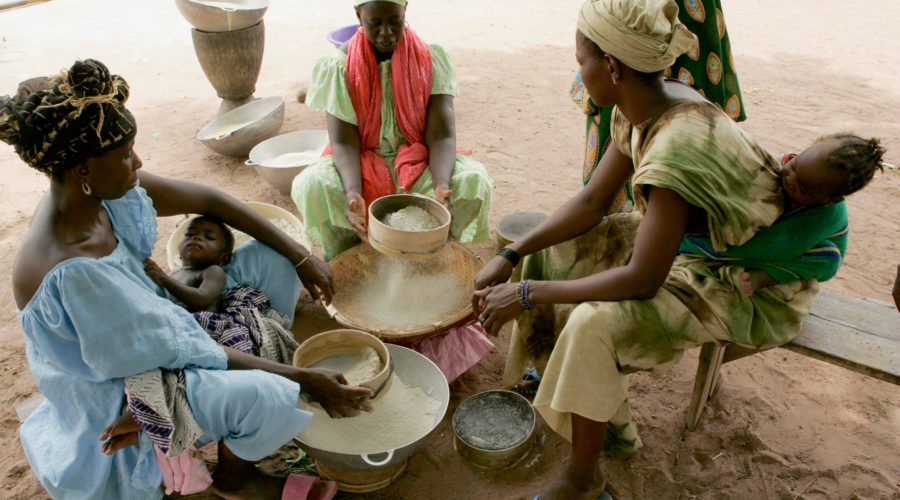The Humanitarian – Development – Peacebuilding Nexus, or the New Way of Working as it is also called, recognizes that greater coordination, coherence, and operational flexibility is needed for humanitarian, peacebuilding and development actors to capitalise on the added value that each sector brings to the operational environment where humanitarian, peacebuilding and development issues are often similar or linked. The 2016 World Humanitarian Summit emphasized the importance of strengthening this link as a top priority in crisis-affected countries, and particularly in protracted crisis. But the practical implementation of this approach is often complicated in the field and obstacles like different terminologies, processes and timing often hamper effective collaboration and cooperation. Creating new ways that allow the three sectors to be mutually reinforcing is however critical, as most humanitarian crisis are protracted and rooted in development and peacebuilding issues.
The mission
The Peer to Peer Project was invited to Colombia by the Humanitarian Coordinator (HC) in August 2018 for a learning mission to capture the positive aspects of their Nexus approach. The country seemed to be a “perfect laboratory” to experiment a new way of working that would enhance joint planning and programming between humanitarian, development and peacebuilding actors. Indeed, despite the Peace Accord signed at the end of 2016 between the National Government and FARC officially ending the conflict, humanitarian concerns still remain, as armed groups and paramilitary groups continue to engage in violent conflict particularly in areas where the FARC used to be active. However, there was a belief that the peace agreement would provide the foundation for a transition from a humanitarian operation to a peacebuilding, recovery and development agenda to gain traction and to allow the reestablishment of local authorities in previously inaccessible areas.
This light mission to Colombia included a team of two core members of the P2P project and a senior colleague from InterAction, the US-based NGO network. The team organised a series of individual consultations and group meetings during the mission with the HC, HCT members, donors, the Colombian Foreign Ministry, individual clusters and the inter-cluster coordination group.
The mission also included a field visit to Quibdó (Chocó Department in the Pacific Coast region) to meet with the municipal authorities, the Local Coordination Team (LCT), and to witness the joint needs overview exercise for humanitarian, development and peacebuilding operations in the area. The Chocó Department was one of the areas most affected by the conflict before the peace agreement was signed and its people still suffer substantially from insecurity, humanitarian needs, limited presence of local authorities, and various development gaps. Hence this seemed to the P2P mission team to be an appropriate location to witness examples of the new approach in practice. Besides the Local Coordination Team in Choco was particularly dynamic, with its two co-chairs (WFP and OCHA) sharing a clear vision and a strong understanding of the added value of their cooperation.
The results
The mission team captured its findings in two main products: a video and a case study. Both are available on this webpage.
Both products expose the practical steps taken by the humanitarian and development leadership in country to put in place a mutually reinforcing approach of their operations to better serve the holistic needs of the affected population.
Local coordination and information management are the backbone of the Nexus approach in Colombia. This strategy was established with support of the HC in 2015 and evolved into a functioning system in which the humanitarian and development operations are planned and coordinated in a complementary manner with a strong decentralization aspect. Information and analysis are crucial to inform humanitarian and development decision-making, and the vision outlined a joint coordination platform that would support mutually reinforcing humanitarian and development plans, without jeopardizing the core principles of humanitarian work, or diluting the role of development. The two approaches would remain distinct, but complementary. In the successful implementation of this vision of a nexus approach it was of utmost importance that it could be built on an already-existing system that was in place for humanitarian information and coordination.
Some key steps of this approach were:
- Transforming Humanitarian Local Teams into Local Coordination Teams that include development and peacebuilding actors at the department level, co-chaired by a development and a humanitarian organization, with sufficient delegated authority
- Developing OCHA information management system into an independent project providing humanitarian, development and peacebuilding congregated infographics and analysis
- Elaborating Development and Peacebuilding products aligned with the Humanitarian products, such as the Development and Peacebuilding Needs Overview and 4W
- Creating joint planning and programming activities at field level.
Lessons learned from this approach for field leaders:
- Build on existing systems
- Develop an approach deeply rooted in the field – a bottom up approach – directly building on affected populations’ needs
- Start with concrete actions that rely on common sense, with immediate added value: keep the vision simple, practical and useful
- Bring humanitarian and development actors into the same room, continuously promoting understanding and familiarity between humanitarian and development colleagues
- Leverage the HC/RC position to build consensus across the humanitarian and development community
- Engage in prolonged advocacy effort: shifting mindsets and building trust take time.




